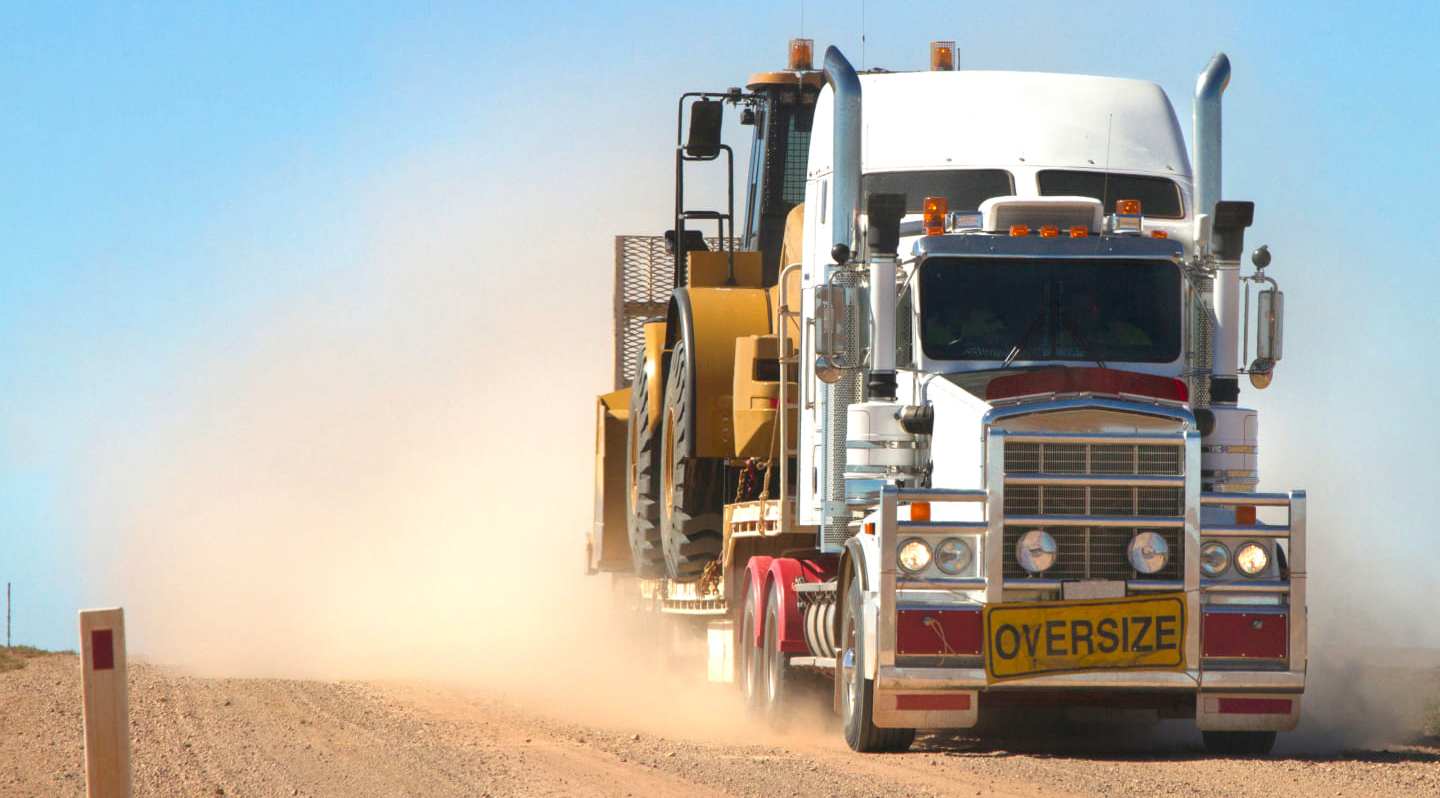A construction company needs to get a dozer to a jobsite. An aircraft manufacturer needs to get a new fuselage to a customer. An energy firm needs to get a steel transformer to a remote location to power a community. Oversized loads, or small but but heavy cargo, often require special processes and heavy hauling to be employed.
Know how to be the most cost-effective and efficient when heavy hauling — transporting large, heavy, or oversized loads.
What is heavy hauling?
As far as the federal government is concerned a heavy load exceeds:
- 80,000 pounds of gross vehicle weight
- 20,000 pounds of single axle weight
- 34,000 pounds of tandem axle weight
Heavy hauling is common in transportation, agriculture, construction, and other industries. Heavy-haul trucking transports oversized items such as industrial machinery, military or farming equipment, and construction materials. You might also see these industries transporting large items that need to follow hazardous materials regulations.
Consider these things when heavy hauling
Transporting heavy, large, or oversized loads requires extra attention from carriers. As with all shipping, the distance the cargo is traveling and the desired time to delivery will factor into your decisions about how to transport. Yet, unlike full truck load or less-than-truckload (LTL) shipments, transporting heavy and oversized loads is a more involved process.
First, you may need special equipment to handle the heavy, wide, or oversize load. Trucks hauling these large or oversized loads may also be required to travel with:
- Safety flags
- Additional lights
- Escort vehicles
- Banners
When shipping cargo over the road, you may need an overweight or oversize load permit. The rules for heavy hauling can vary by state as well. For instance, one state may prohibit oversized loads on major highways while another limits the hours those loads can be on the road.
Heavy hauling best practices
Follow these best practices for help with heavy or oversized loads and for greater peace of mind.
Inventory your shipment
Know the exact measurements of your cargo in order to get the right permits, equipment, and tools. Make sure your drivers can safely load, secure, move, and deliver their cargo.
Know the rules
Follow state or federal regulations for heavy, large, or oversized loads — and reduce the chances of a delayed delivery. As mentioned above, there are varied requirements depending on the shipment’s measurements, what it includes, and where it’s traveling.
Plan ahead
Research transportation rules in advance. Trying to rush a heavy, large, or oversize load compounds transportation difficulty. A heavy or oversize load may require special vehicles, equipment, and skilled drivers.
Take advantage of technology
Use fleet management software to gain greater visibility into each of your shipments. As a carrier, fleet management software helps you improve the planning and execution of heavy hauling and delivery. An easy-to-use, flexible system can drive greater efficiency, improve driver safety, and increase overall profitability.
How much does heavy hauling cost?
The costs for transporting large, heavy, or oversized loads varies depending on several considerations. In addition to distance traveled and the timeframe required for delivery, you’ll also need to factor in the weight, size, and type of cargo you’re shipping.
If the heavy or large cargo makes for a wide load or requires a heavy-duty truck, that will mean greater costs. Transporting large or heavy loads of hazardous materials also means more risks and regulations, so that can also affect transportation cost as well.
Expediting delivery also adds to your overall costs.
How to pack cargo for heavy haul loads
Know how to pack large, heavy, or oversize items to reduce costs and improve the safety and security of your load. Ultimately, the more efficiently you pack, the lower your freight costs. Let’s look at a few considerations:
- Choose durable packaging (if your heavy shipment is packaged and not a piece of heavy equipment on a flatbed). Due to the size and bulk of the items, the shipment could endure more wear and tear. It’s a good practice to package your cargo to withstand shocks. Heavy, large, and oversized loads are more likely to be lifted by forklifts or hydraulic lift and could be moved from truck to truck several times on a delivery route.
- Brace your cargo. Fill any empty spaces to avoid the items moving around when en route. Secure all shipments safely to reduce risks when in motion. Heavy items risk getting dropped, will be subject to vibrations, and could experience compression from other items when stacked. Pallets can be useful to move heavy and larger loads as they are built to be hauled and lifted.
- If your goods are fragile, ship them with extra care. You don’t want to risk damage during shipping. That can lead to expensive returns and refunds and diminished customer satisfaction.
- Take accurate measurements. Know the weight, length, and girth involved. This data can also help with shipping insurance (if and when it’s needed), which can help cut risks.
- Label the cargo clearly to simplify unloading and loading and to let any inspectors know what the packages contain. This helps your drivers avoid hurdles.
How Motive can help when heavy hauling
Identify efficiencies when shipping large items, heavy-haul trucking, or adding the hazmat considerations. Motive’s fleet management software can help your fleet gain visibility into assets to optimize routes and meet deadlines. GPS tracking can also help fleet managers put drivers on safer routes, while our automated post-trip coaching helps improve driving behaviors.
With insights into vehicle location and maintenance status, driver safety, on-time delivery success, and route efficacy, your fleet can make data-driven decisions about the best way to meet (even exceed) customer expectations.
More than 100,000 companies use Motive to transform the safety, productivity, and profitability of their operations. Discover what Motive can do for your company.




